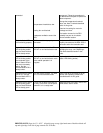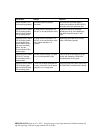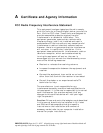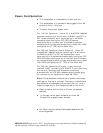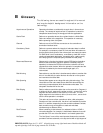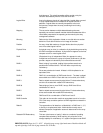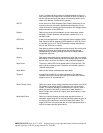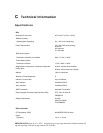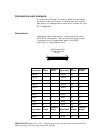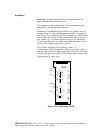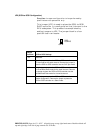
PRINTER NOTE: Page size 9” x 9.25”. Align this page to top, right hand corner. Back box bleeds off
top and right edge. Left side of page extends to 9.25 inches.
fault tolerance. This rebuild operation will be carried out by the
controller automatically when a SCSI disk drive fails.
Logical Drive A set of contiguous chunks of a physical disk. Logical disks are used
in array implementations as constituents of logical volumes or
partitions. Logical disks are normally transparent to the host
environment, except when the array containing them is being
configured.
Mapping The conversion between multiple data addressing schemes,
especially conversions between member disk block addresses of the
virtual disks presented to the operating environment by the array
management software.
Mirroring Refers to the 100% duplication of data on one disk drive to another
disk drive. Each disk will be the mirror image of the other.
Partition An array virtual disk made up of logical disks rather than physical
ones. Also called logical volume.
Physical Drive A physical array (or drive) is a collection of physical disks governed by
the RAID management software. A physical drive appears to the host
computer as one or more logical drives.
RAID (Redundant Array of Independent Disks) An approach to using
multiple low cost drives as a group to improve performance, yet also
provide a degree of redundancy that makes data loss remote.
RAID 0 Block “striping” is provided, yielding higher performance than is
possible with individual drives. This level does not provide any
redundancy.
RAID 1 Drives are paired and mirrored. All data is 100% duplicated on an
equivalent drive.
RAID 10 RAID 10 is a combination of RAID levels 0 and 1. The data is striped
across disks as in RAID 0. Each disk has a mirror disk, as in RAID 1.
RAID 3 Data is striped across several physical drives. For data redundancy
one drive is encoded with rotated XOR redundancy.
RAID 30 Data striping of two or more RAID 3 arrays. RAID level 30 is a
combination of 0 and 3.
RAID 5 Data is striped across several physical drives. For data redundancy
drives are encoded with rotated XOR redundancy.
RAID 50 RAID level 50 is a combination of RAID level 0 and 5.
RAID Controller This refers to the controller card that routes data to and/ or from the
CPU. Disk array controllers perform all RAID algorithms onboard the
controller.
Rebuild The regeneration of all data from a failed disk in a RAID level 1, 3, 5,
or 6 array to a replacement disk. A disk rebuild normally occurs
without interruption of application access to data stored on the array
virtual disk.
Rotated XOR Redundancy This term (also known as “parity”) refers to a method of providing
complete data redundancy while requiring only a fraction of the
storage capacity for redundancy. In a system configured under RAID



